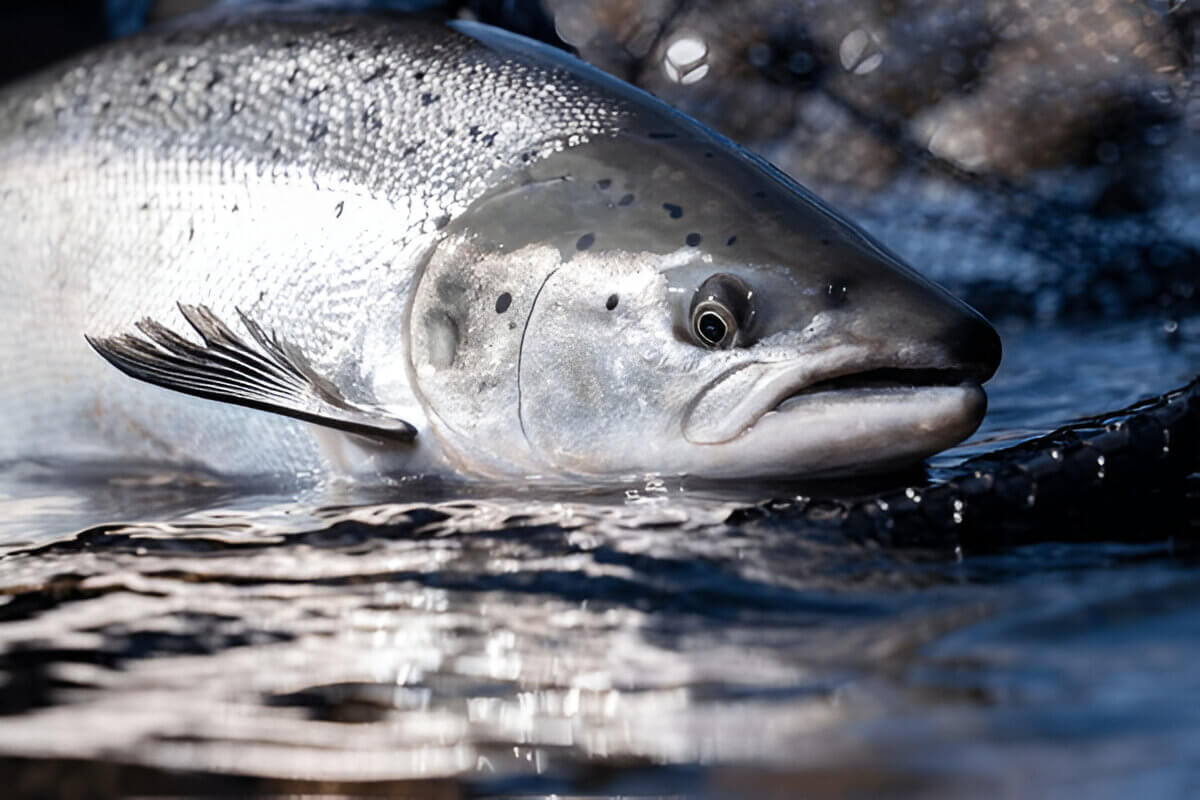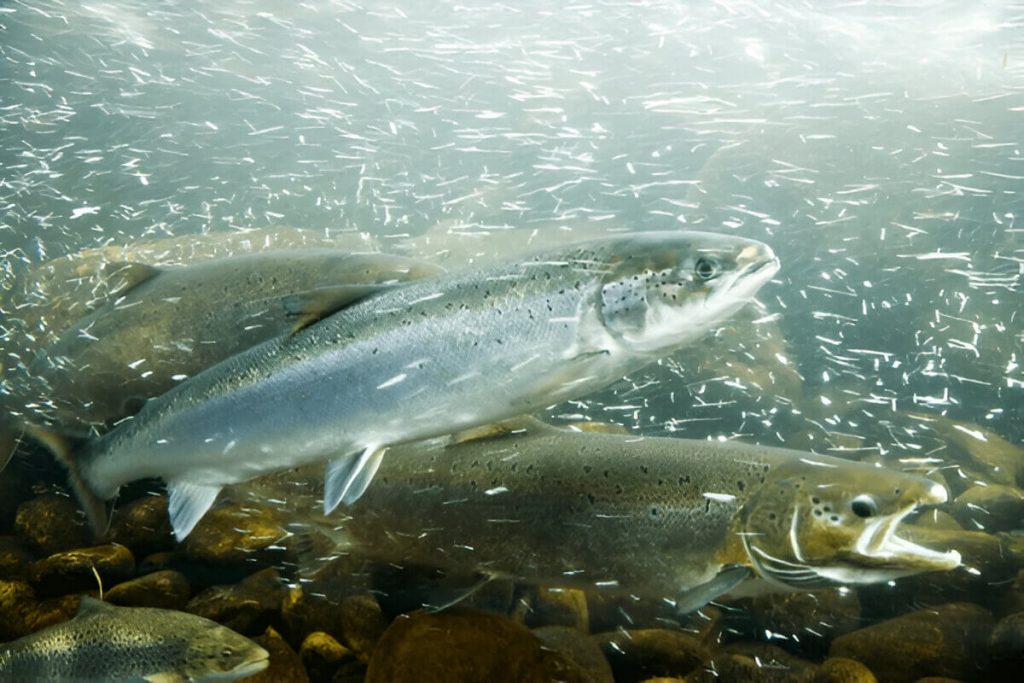
Atlantic salmon are crucial to ecosystems and human nutrition. Found in the North Atlantic Ocean and rivers, they migrate from freshwater to the ocean to spawn. They face habitat loss and population decline due to environmental changes. Understanding their ecological importance highlights nutritional benefits and conservation needs. This article explores their habitat, life cycle, threats, and preservation practices.
What is Atlantic Salmon and Why is it Important?
Atlantic salmon, scientifically known as Salmo salar, is a species of salmon found in the northern Atlantic Ocean and in rivers that flow into it. This remarkable fish is renowned not only for its culinary value but also for its ecological significance. Unlike some other salmon species, Atlantic salmon are anadromous, meaning they migrate from the ocean to freshwater rivers to spawn. This life cycle plays a crucial role in maintaining healthy aquatic ecosystems.
The importance of Atlantic salmon extends beyond their economic value as a sought-after food source. Ecologically, they contribute significantly to nutrient cycling within river systems. When adult salmons return to their natal rivers to spawn, they bring with them marine-derived nutrients that enrich freshwater environments. These nutrients support the growth of various aquatic organisms and help sustain biodiversity within these ecosystems.
Moreover, Atlantic salmon serve as an important prey species for numerous predators both in marine and freshwater habitats. Their presence influences the population dynamics of other species and helps maintain ecological balance. Conservation efforts aimed at protecting Atlantic salmon populations are therefore vital not only for preserving this iconic fish but also for ensuring the health and resilience of entire ecosystems where they play an integral role.
The Life Cycle of Atlantic Salmon
The life cycle of Atlantic salmon is a fascinating journey that spans both freshwater and ocean environments, showcasing the remarkable adaptability of this species. It begins in the freshwater stages, where adult salmon return to their natal rivers to spawn. This spawning process typically occurs in late autumn, as female salmon lay their eggs in gravel nests called redds. After fertilization by male salmon, the eggs incubate over winter and hatch into alevins during early spring.
As these young fish grow into fry and then parr, they remain in the freshwater environment for one to three years. During this time, they develop distinctive markings that help camouflage them from predators. As they mature into smolts, Atlantic salmon undergo physiological changes that prepare them for ocean migration, a critical transition from river to sea.
Once in the ocean, these resilient fish embark on long migratory journeys across vast marine expanses. They spend one to four years feeding and growing in rich oceanic waters before returning to their birthplace to repeat the spawning process. Understanding each stage of the Atlantic salmon life cycle (from freshwater habitats through ocean migration) provides valuable insights into their ecological importance and helps inform conservation efforts aimed at protecting this iconic species.
Where Do Atlantic Salmon Live?

Atlantic salmon are remarkable fish known for their extensive migratory patterns and unique habitat requirements. Primarily, these fish inhabit the cold waters of the North Atlantic Ocean, where they spend a significant portion of their life cycle. The oceanic distribution of Atlantic salmon extends from the eastern coast of North America to the western shores of Europe, including countries like Canada, the United States, Iceland, Greenland, Norway, and Russia.
The journey of an Atlantic salmon begins in freshwater river habitats where they hatch and spend their early years. These river habitats are crucial for spawning and juvenile development. The ideal river conditions for Atlantic salmon include clean, oxygen-rich water with gravelly bottoms that provide suitable environments for laying eggs.
Once they mature enough to migrate to the ocean (a process known as smoltification) these young salmon embark on an epic journey from their natal rivers to the open sea. In the North Atlantic Ocean’s vast expanse, they grow and mature over several years before returning to their birthplace rivers to spawn.
Understanding these complex habitat needs is vital for conservation efforts aimed at protecting this species from threats such as habitat destruction and climate change. By preserving both their freshwater river habitats and ensuring healthy marine environments in the North Atlantic Ocean distribution range, we can help sustain robust populations of this iconic fish species.
The Nutritional Benefits of Consuming Atlantic Salmon
Atlantic salmon is not just a delicious choice for seafood lovers; it also offers a wealth of nutritional benefits that can significantly enhance your diet. One of the most notable health benefits of Atlantic salmon is its rich content of omega-3 fatty acids. These essential fats are known for their heart-healthy properties, helping to reduce inflammation, lower blood pressure, and decrease the risk of heart disease. Regular consumption of omega-3 in salmon can contribute to improved cardiovascular health and support overall well-being.
In addition to its omega-3 content, Atlantic salmon is a protein-rich fish that provides an excellent source of high-quality protein. This makes it an ideal choice for those looking to build or maintain muscle mass while enjoying a satisfying meal. Protein is crucial for repairing tissues, producing enzymes and hormones, and supporting immune function.
Moreover, Atlantic salmon contains important vitamins and minerals such as vitamin D, B vitamins (including B12), selenium, and potassium. Vitamin D plays a vital role in bone health by aiding calcium absorption, while B vitamins are essential for energy production and maintaining brain function. Selenium acts as an antioxidant that helps protect cells from damage.
Incorporating Atlantic salmon into your diet can be a tasty way to boost your intake of these vital nutrients while enjoying the savory flavors this fish has to offer. Whether grilled, baked, or smoked, this versatile fish provides both culinary delight and numerous health advantages.
Challenges Facing Atlantic Salmon Populations Today
Atlantic salmon populations are facing a myriad of challenges that threaten their survival and proliferation. One of the most pressing threats to Atlantic salmon is the significant decline in their population numbers, which has been attributed to various environmental impacts and human activities. Habitat loss is a critical factor contributing to this decline, as many rivers and streams that serve as spawning grounds for salmon are being altered or destroyed due to urban development, agriculture, and infrastructure projects.
The degradation of water quality also poses a severe threat to Atlantic salmon. Pollutants from industrial runoff, agricultural pesticides, and untreated sewage can contaminate waterways, making them inhospitable for salmon at various life stages. Furthermore, climate change exacerbates these issues by altering water temperatures and flow patterns, which disrupts the delicate balance required for successful spawning and migration.
Overfishing in both freshwater and marine environments has further compounded the problem by reducing adult populations before they can reproduce. Additionally, competition with non-native species introduced into their habitats puts additional pressure on already stressed populations.
Addressing these threats requires concerted conservation efforts focused on restoring natural habitats, implementing sustainable fishing practices, reducing pollution levels, and mitigating climate change effects. Only through comprehensive strategies can we hope to preserve Atlantic salmon populations for future generations.
Conservation Efforts for Protecting Atlantic Salmon and Their Ecosystems
Conservation efforts for protecting Atlantic salmon and their ecosystems have become increasingly critical as these majestic fish face numerous threats, from habitat loss to overfishing. One of the primary strategies involves comprehensive conservation programs aimed at Atlantic salmon recovery. These programs focus on restoring natural habitats by improving river connectivity, removing barriers such as dams, and enhancing water quality. By providing a conducive environment for spawning and migration, these initiatives aim to boost salmon populations.
Sustainable fishing practices also play a vital role in preserving the delicate ecosystems that support Atlantic salmon. Implementing regulations that limit catch sizes and seasons helps ensure that fishing activities do not deplete salmon stocks beyond recovery levels. Moreover, promoting catch-and-release practices among anglers can significantly reduce mortality rates of wild salmon.
Collaborative efforts between governments, environmental organizations, and local communities are essential for the success of these conservation measures. By raising awareness about the importance of sustainable fishing practices and supporting habitat restoration projects, we can work together to safeguard Atlantic salmon populations for future generations while maintaining healthy aquatic ecosystems.
How Consumers Can Support Atlantic Salmon Conservation (Sustainable Practices)
When it comes to supporting Atlantic salmon conservation, consumers play a crucial role by making informed choices about the seafood they purchase. One of the most effective ways to contribute is by opting for sustainable seafood choices. This means selecting products that are harvested in ways that do not harm the environment or deplete fish populations. Look for certifications such as the Marine Stewardship Council (MSC) label, which indicates that the seafood has been sourced sustainably.
In addition to choosing certified products, consumers can prioritize responsibly sourced products from fisheries and farms committed to environmentally friendly practices. These organizations often employ methods that minimize bycatch and habitat damage while maintaining healthy fish stocks.
Moreover, supporting conservation initiatives directly can have a significant impact. Many organizations work tirelessly to protect Atlantic salmon habitats and promote sustainable fishing practices. By donating to these causes or participating in related events, consumers can help fund critical research and restoration projects.
Ultimately, every purchase decision matters. By consciously choosing sustainable options and backing conservation efforts, consumers can drive demand for responsible practices and contribute to the long-term health of Atlantic salmon populations.